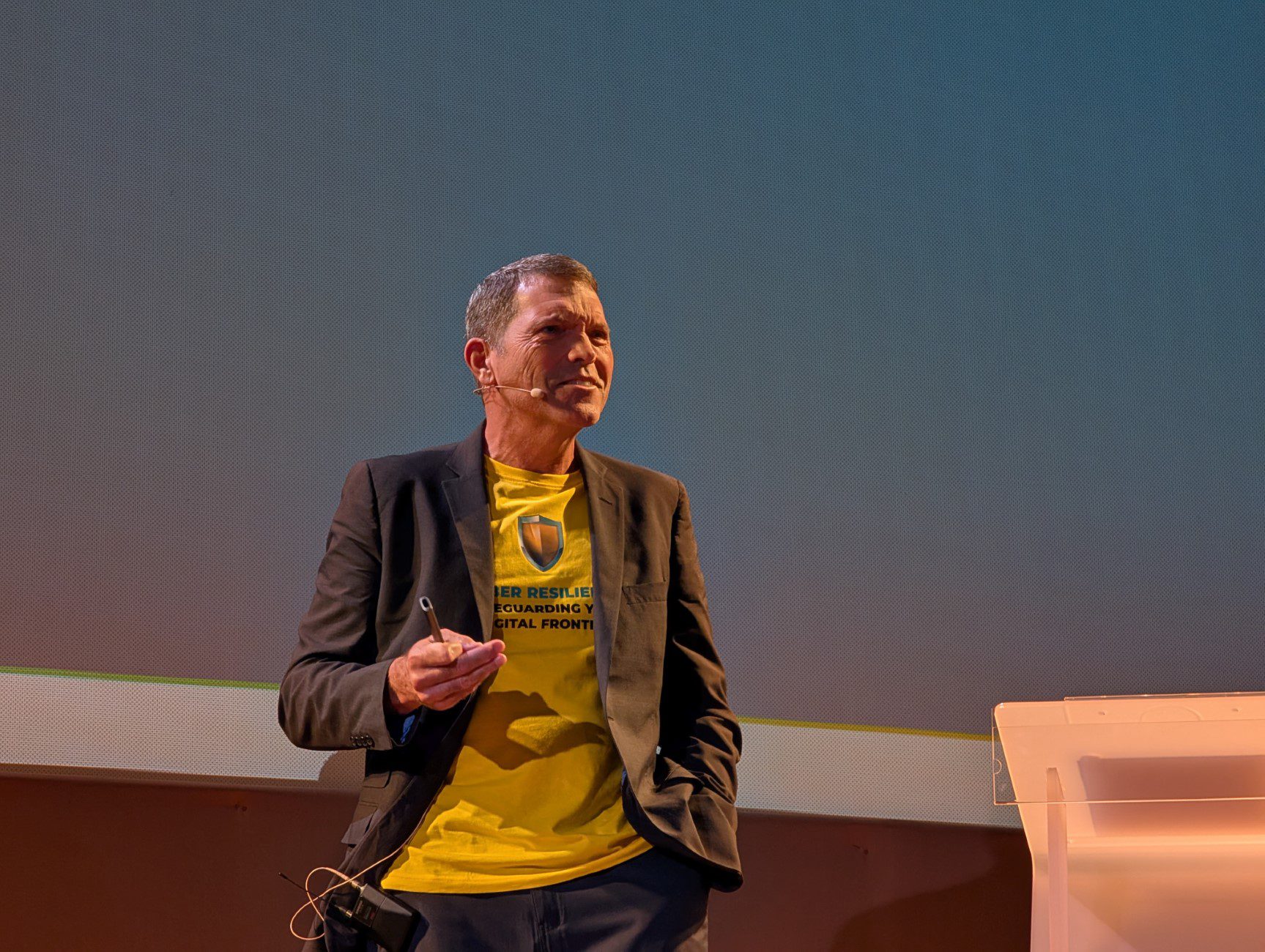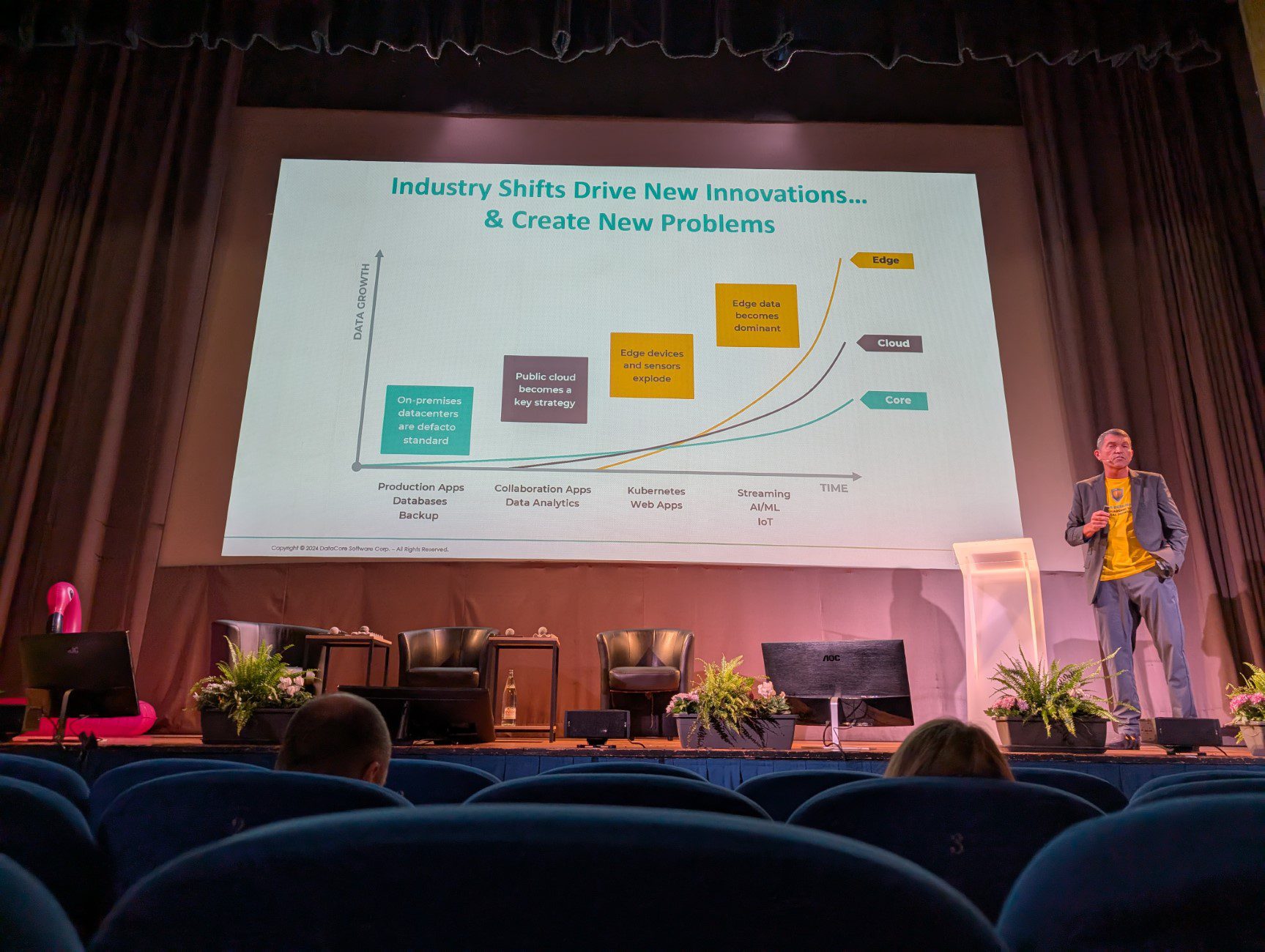DataCore has its sights set on cloud realists and edge opportunities
- October 4, 2024
- 0
DataCore is in a sprint, but at the same time in a marathon. The cloud is not an all-encompassing solution. Data is sometimes finding its way back and
DataCore is in a sprint, but at the same time in a marathon. The cloud is not an all-encompassing solution. Data is sometimes finding its way back and


DataCore is in a sprint, but at the same time in a marathon. The cloud is not an all-encompassing solution. Data is sometimes finding its way back and the brand wants to capitalize on it.
Software Defined Storage, SDS for friends, is the basis on which DataCore has grown since 1998. SANsymphony is the key to the brand’s success and at the same time the only product in the portfolio until 2020 with a focus on block and file storage.
It’s a marathon, but secretly also a sprint. Within four years, the company acquired five companies to further expand into cloud, Kubernetes and edge. The first one, leading to Swarm, was still heavily focused on SDS. The acquisition of MayaData with OpenEBS brought with it a container platform. The next two acquisitions focused on Edge with Periphery and Object Matrix.
The youngest is the one with the greatest ambitions: AI+ with, among other things, automated workflows.

Dave Zabrowski, CEO of DataCore, quickly takes the stage at the annual DataCore Days, this year in Menton, France. Shortly beforehand we were allowed to watch an extremely funny video. Work hard, play hard, that’s how everything feels at DataCore.
Zabrowski points out the trend that every storage builder cites: “The data explosion is everywhere. The data doubles every fourteen months. For us, these are market opportunities.”
He still seamlessly attaches his NIS2 wagon to it: “The new regulations indicate mandatory cyber resilience for companies. Data management becomes key. Prevent, Detect and Recover.” We see the three words appear several times in the other presentations that day.
NIS2 will be a key focus for DataCore. A new NIS2-specific solution will follow later this month, about which little is known for now.
With DataCore.Next, the company has a strong core for the future thanks to numerous acquisitions and various investment rounds:
Zabrowski points out the opportunities in the coming years because there is a clear trend. “By the end of 2024, we will reach a total global storage capacity of 4,250 exabytes, up from 1,420 exabytes in 2020. This is a huge increase, but the budget that companies spend on IT infrastructure has not grown proportionally. We have to jump into this hole.”

The CEO mentions this trend several times in his keynote: The exodus to on-premises has begun. “Cloud customers today are realizing that costs are skyrocketing and data sets are becoming too large. Even Amazon admitted in its earnings call last quarter that it was observing this trend.”
According to Zabrowski, the edge will play a very important role. “Large data sets need to be managed at the edge. All data has become too large to be managed from a central location. Everything happens at the edge, only the metadata is moved to a central location.”
It’s no coincidence that this is the core of DataCore, so it’s natural that Zabrowski will continue to hit this nail. On the other hand, we must agree that DataCore is well positioned to benefit in Europe, where it mainly operates.
At the end of his keynote, the CEO points out that organizations should not be deceived. “Beware of cloudwashing. Companies dump old applications in the cloud and think they’re done. No, eh. The same thing is currently happening on a massive scale with artificial intelligence. Try to be realistic, otherwise reality will catch up with you.”
Watch out for cloudwashing. Companies dump old applications in the cloud and think they’re done. No, eh.
Dave Zabrowski, CEO of DataCore
Finally, Zabrowski would like to advocate for containers. “For us, Kubernetes is strategically extremely important. This is the most efficient way to deploy applications today. Virtualization has defeated bare metal. Kubernetes will make a name for itself in the same way.”
At the same time, he combines his love for containers with an important new announcement with a supported solution from OpenEBS for the enterprise segment.
Kubernetes will be an important source of revenue for DataCore, the CEO said. This, combined with the trusty workhorse SANsymphony and the start of an AI process, makes the company an interesting partner to keep an eye on in the coming period.
Source: IT Daily
As an experienced journalist and author, Mary has been reporting on the latest news and trends for over 5 years. With a passion for uncovering the stories behind the headlines, Mary has earned a reputation as a trusted voice in the world of journalism. Her writing style is insightful, engaging and thought-provoking, as she takes a deep dive into the most pressing issues of our time.